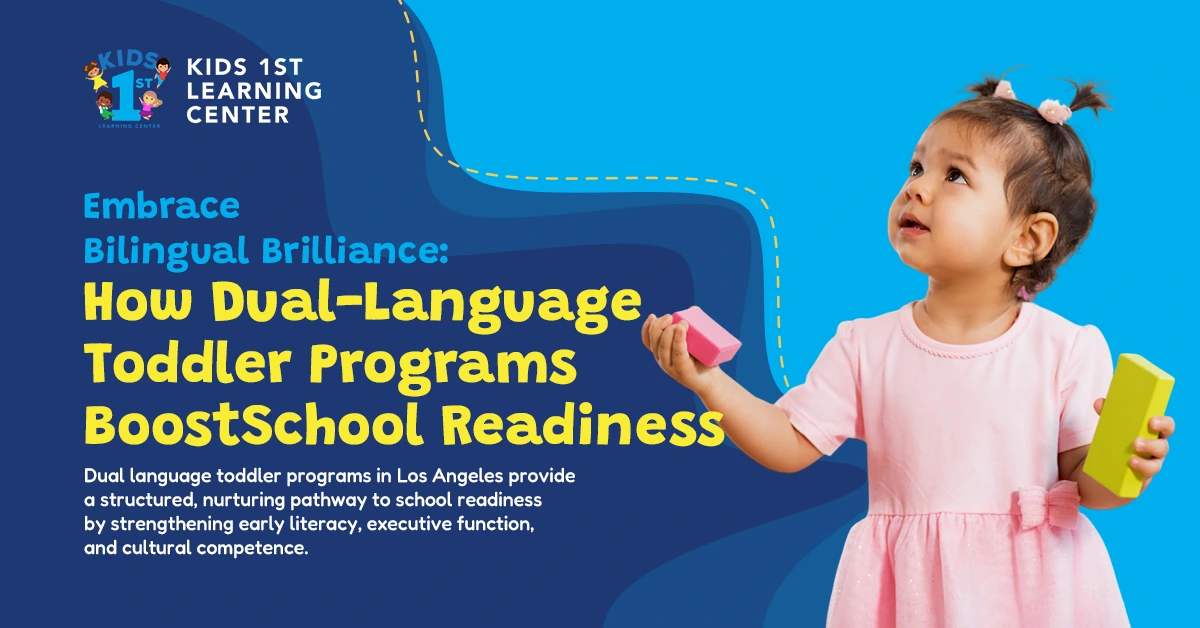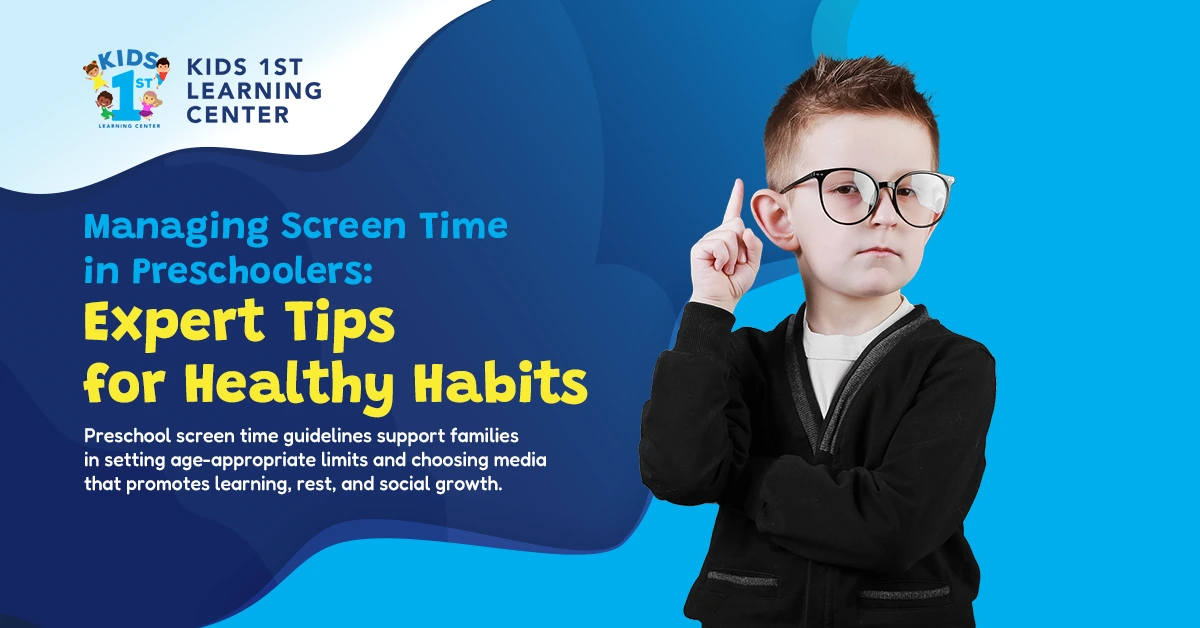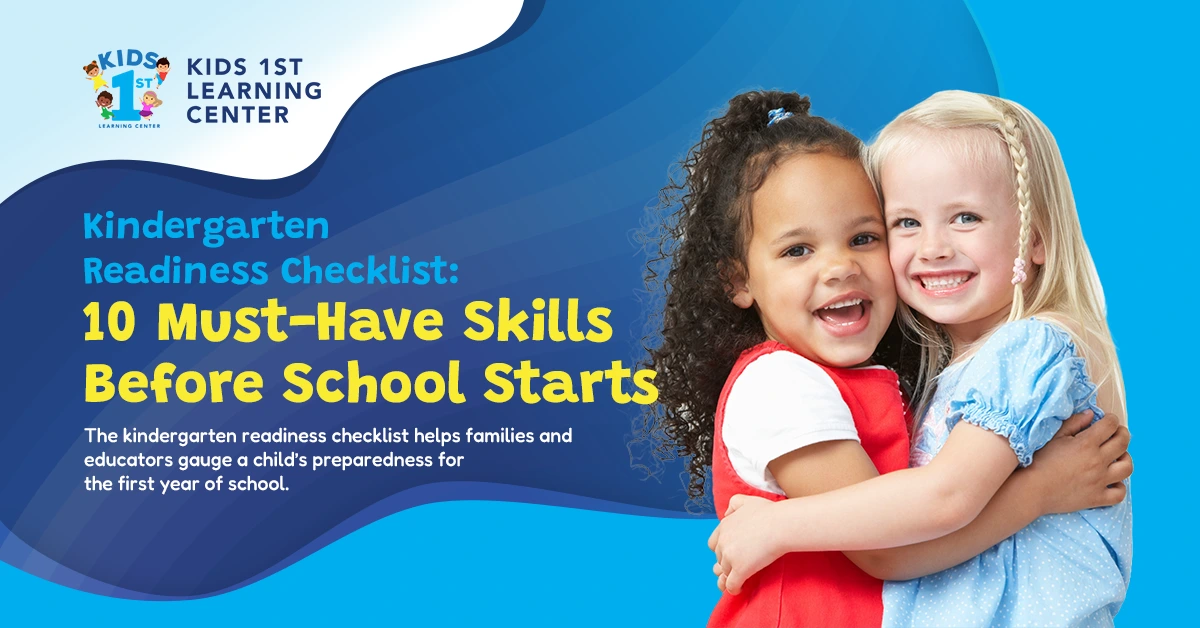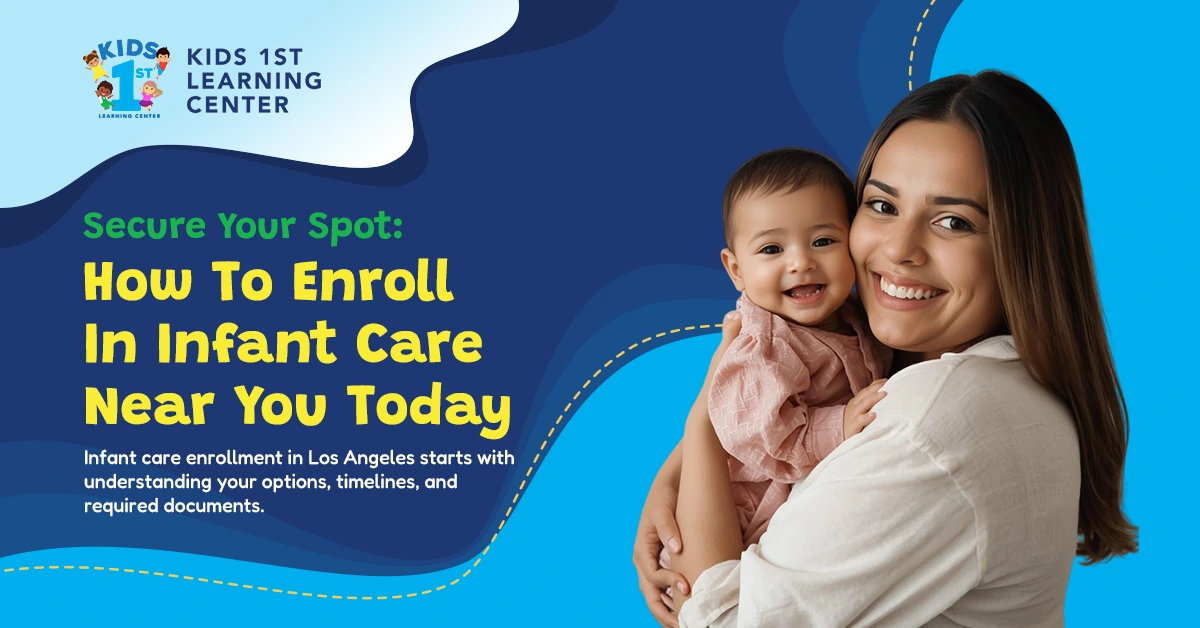 Infant care enrollment in Los Angeles starts with understanding your options, timelines, and required documents. Families often secure spots months in advance, so beginning early helps you compare program quality, teacher credentials, class ratios, and safety standards. Make a shortlist of licensed centers near your home or workplace, review availability by start date, and note application windows.
Infant care enrollment in Los Angeles starts with understanding your options, timelines, and required documents. Families often secure spots months in advance, so beginning early helps you compare program quality, teacher credentials, class ratios, and safety standards. Make a shortlist of licensed centers near your home or workplace, review availability by start date, and note application windows.
Prepare essentials such as immunization records, emergency contacts, and any care plans your pediatrician recommends. Schedule tours to observe daily routines, feeding practices, and family communication methods. With a clear plan and organized paperwork, you can confidently move from research to enrollment.
Understand the Infant Daycare Application Process
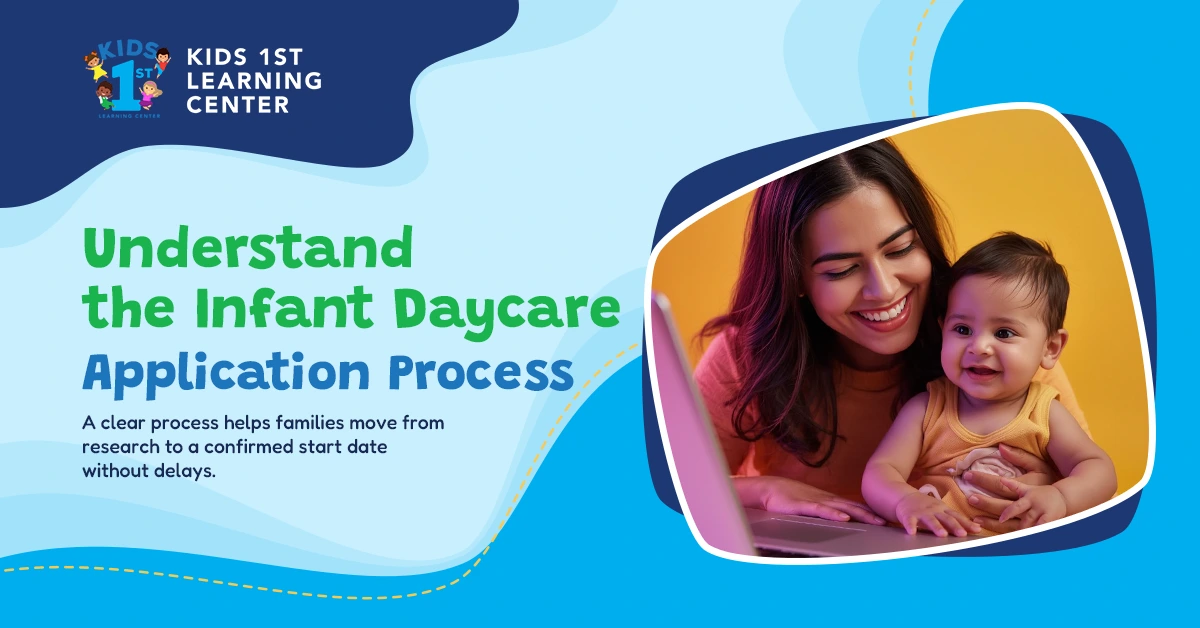
A clear process helps families move from research to a confirmed start date without delays. Begin by confirming basic eligibility: age range served, schedule options, and proximity to home or work. Review each center’s admissions calendar, since many open applications seasonally or maintain rolling enrollment based on available seats.
1) Inquiry and Tour Scheduling:
Submit an online inquiry or call to confirm space projections for your target month. Reserve a tour to observe caregiver interactions, diapering and feeding routines, sanitation practices, and communication tools used with families. Clarify ratios, teacher credentials, and hours that match your commute.
2) Application Submission:
Complete the application in full and keep copies of all materials. Typical items include parent identification, your child’s birth certificate, desired start date, schedule preference, and authorized pickup list. Ask about sibling priority, employer partnerships, and community or needs-based preferences that may affect placement.
3) Required Health Documentation:
Most licensed programs request immunization records, a recent well-child exam, and physician-signed care plans for allergies or medications. Confirm timelines for updated forms before the first day. If your pediatrician needs program-specific forms, request them during the tour.
4) Waitlist Placement and Offer:
If immediate seats are unavailable, you may be offered a waitlist position. Request written confirmation of your status, typical movement patterns, and how often the list is updated. When an offer arrives, centers usually provide a response window, an enrollment packet, and a tuition schedule.
5) Enrollment Packet and Fees:
Carefully review the family handbook, admissions agreement, tuition rates, and calendar. Many centers require a registration fee and a deposit credited toward the first month. Confirm payment methods, late pickup policies, and holiday closures.
6) Orientation and Start Preparation:
After acceptance, schedule orientation to align on feeding preferences, nap routines, and communication expectations. Label bottles, pacifiers, and clothing. Prepare an emergency contact list and confirm who will handle drop-off and pickup during the first week.
Quick Checklist:
- Confirm program license number and ratios
- Tour and ask about projected openings
- Apply and required health forms
- Track waitlist updates and deadlines
- Review tuition, fees, and policies
- Complete orientation and first-day supplies
With organized steps and timely communication, families can efficiently complete the infant daycare application process and secure a suitable start date.
Check Baby Care Availability in Los Angeles
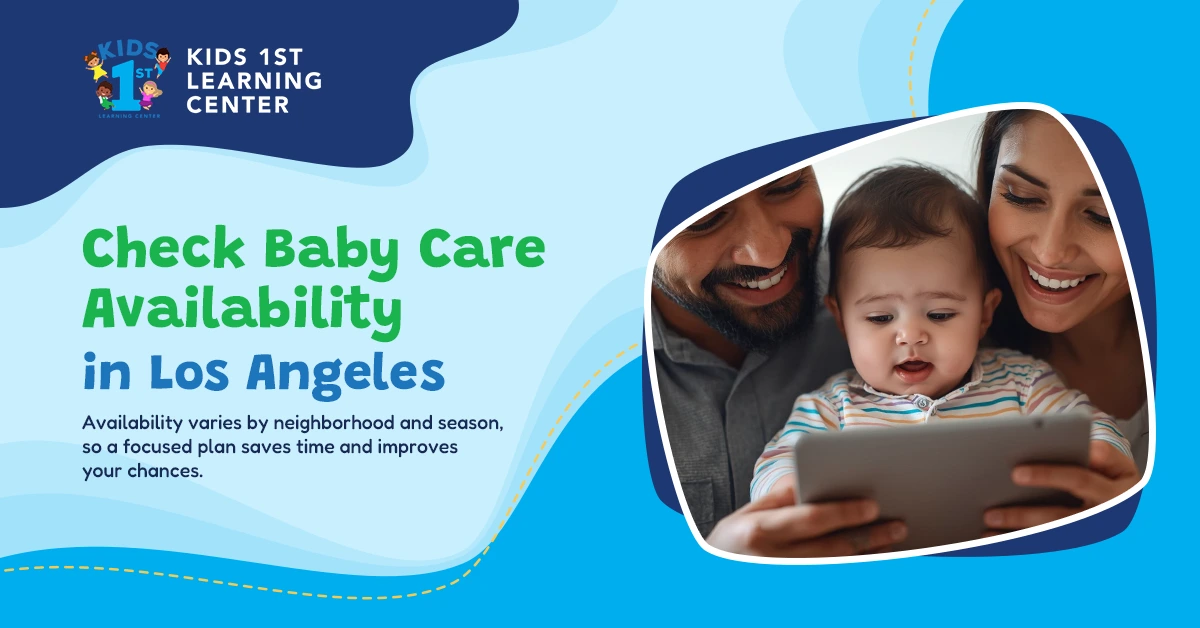
Availability varies by neighborhood and season, so a focused plan saves time and improves your chances. Begin by defining your target start month and acceptable commute radius. Include home, workplace, and common corridors such as Downtown, Westside, San Fernando Valley, South Bay, and the Pasadena–Glendale area. Create a shortlist of centers that align with your schedule preferences, care philosophy, and budget, then contact each one to confirm projected openings for your desired start date.
Map Your Search Radius
Group options by zip code and travel time during typical drop-off and pickup windows. Ask centers about parking, security, and building access procedures. If traffic patterns complicate your route, consider alternatives such as employer-adjacent locations or sites near transit.
Understand Seasonal Demand
Infant seats often align with transitions from infant to toddler classrooms. Movement tends to cluster around late summer and the new year. Request historical patterns for your target month and ask when lists usually advance. If you need a backup plan, identify a secondary start date that maintains continuity for work schedules.
Use Waitlists Strategically
Join multiple waitlists and track each center’s criteria. Request written confirmation of your position, notification method, and response timelines. Ask whether deposits are refundable or transferable if a later opening becomes available. Confirm whether part-time schedules influence priority.
Confirm Schedule Flexibility
Verify full-time, part-time, or extended day options. Ask about minimum weekly hours, earliest drop-off, and latest pickup. Clarify policies for occasional schedule changes, vacation holds, and holiday closures. If your work hours shift, confirm that the program can accommodate future adjustments.
Validate Capacity and Ratios
Confirm the program’s license number, infant capacity, and caregiver-to-child ratios. Ask whether float staff support coverage is available during educator breaks and training. Review crib counts, safe sleep practices, and bottle handling procedures to understand how staffing connects to daily routines.
Availability Checklist
- Target start month and secondary date
- Commute radius and neighborhood groups
- Projected openings and historical movement
- Waitlist position and deposit terms
- Schedule options and closure calendar
- License, capacity, and ratios
A structured approach helps you compare real-time availability, understand movement cycles, and secure a seat that fits your family’s timeline and logistics.
Compare Licensed Infant Programs Near Me
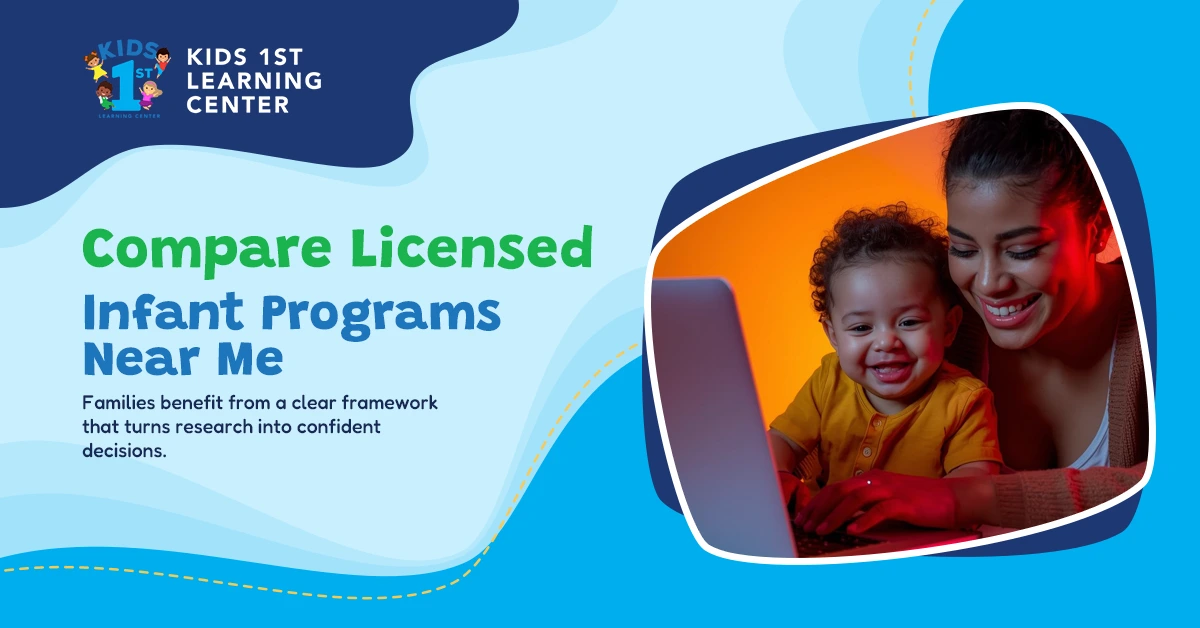
Families benefit from a clear framework that turns research into confident decisions. Begin by confirming that each option is fully licensed with a current license number, a clean inspection history, and transparent corrective actions, if any were required. Accreditation from respected bodies adds quality assurance through ongoing evaluation and staff training.
Staff Qualifications and Ratios
Request caregiver résumés or profiles that show infant credentials, pediatric first aid, and continuing education. Verify ratios for each room and ask how float teachers support breaks and coverage. Stable staffing supports secure attachments, consistent routines, and timely family communication.
Curriculum and Daily Care
Look for a written plan that addresses responsive caregiving, tummy time, early language exposure, sensory play, and individual nap and feeding plans. Ask how educators adapt activities for developmental stages, how often they document milestones, and how they partner with families on emerging skills.
Safety and Health Practices
Review safe sleep policies, crib assignments, bottle labeling and storage, diapering and sanitation procedures, and illness exclusion rules. Check that emergency drills are practiced and logged. Confirm access controls, visitor policies, and camera usage guidelines that respect privacy while protecting children.
Family Communication and Culture
Effective programs share daily notes, photos, and incident reports through a secure app or written logs. Ask about handoff routines at drop-off and pickup, conference schedules, and how concerns are escalated. Seek centers that welcome family preferences for feeding, soothing, and cultural practices.
Cost Transparency and Policies
Request a written fee schedule that lists tuition, deposits, registration fees, supply fees, and late pickup charges. Clarify holiday closures, vacation holds, and notice requirements. A clear family handbook reduces ambiguity and helps plan for the first year.
Facility and Environment
Observe the cleanliness of floors and high-touch surfaces, the condition of cribs and bouncers, and the layout that separates active play from sleep areas. Natural light, age-appropriate equipment, and calm noise support comfort and regulation.
Comparison Checklist
- License status and inspection results
- Ratios, staffing stability, and training
- Curriculum, documentation, and milestone tracking
- Health, safety, and emergency protocols
- Communication systems and family partnership
- Tuition, fees, and policy clarity
- Environment, equipment, and room design
Thoughtful comparison of licensed infant programs near me helps align care quality, safety, and family priorities.
Tours, Quality Standards, and Transition Planning
A structured tour helps families confidently evaluate daily care, safety, and communication. Schedule visits during typical routines such as morning drop-off or midafternoon care so you can observe feedings, diapering, and target=”_blank” nap transitions. Consider briefly stepping into the infant room to view the environment, then review the family handbook and licensing information with the administrator.
What To Observe During Tours
Look for calm, responsive interactions between caregivers and infants. Note how staff soothe, how often they wash hands, and how bottles are labeled and stored. Review crib spacing, safe sleep signage, and room temperature. Check whether play materials are clean, rotated by age, and stored safely. Ask how incident reports are documented and shared with families.
Quality Standards To Verify
Confirm the license number, most recent inspection date, and any corrective actions. Ask about accreditation, staff certifications in pediatric first aid and CPR, and required annual training hours. Verify ratios and how float staff maintain coverage during breaks. Review health policies, illness exclusion guidelines, medication procedures, and emergency drill logs. Request clarity on visitor access, entry controls, and pickup verification.
Communication and Family Partnership
Strong programs share daily notes, photos, feeding and diaper logs, and sleep summaries through a secure app or written sheet. Ask about conference schedules, growth updates, and communication of teacher changes. Confirm that family preferences for bottles, solids, soothing, and cultural practices are welcomed and documented.
Transition Planning Before the First Day
Plan a gradual start that aligns with your work schedule and your child’s temperament. Many families use brief introductory visits followed by partial days. If permitted, prepare labeled bottles, extra clothing, diapers, wipes, and comfort items. Provide an emergency contact list and confirm who will handle drop-off and pickup. Review the first week calendar to avoid major schedule disruptions.
First Week Checklist
- Orientation completed and forms submitted
- Feeding plan and sleep preferences documented
- Allergy or medication plan on file
- Communication app set up and tested
- Backup pickup adults verified
- Extra clothing and supplies labeled
Thoughtful tours and clear quality benchmarks create a reliable foundation. With a simple transition plan and consistent communication, your family can enter the first week prepared and supported.
Conclusion
A successful enrollment begins with clear information and steady planning. You give your family a strong start when you understand the application process, verify current availability, and compare licensed programs with consistent quality standards. Tours help you see daily care and confirm that health, safety, and communication practices match your expectations. A thoughtful transition plan supports your child’s comfort during the first week. With organized steps and timely follow-up, you can secure a seat that aligns with your schedule, values, and goals for the first year of care.
Ready to take the next step? Contact Kids 1st at (818) 873-0133 or visit https://kids1st.org/contact-kids-1st/.


